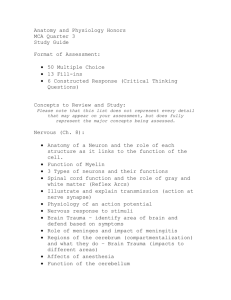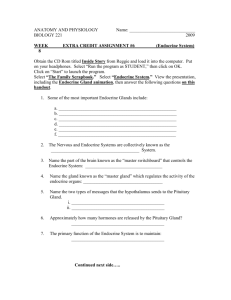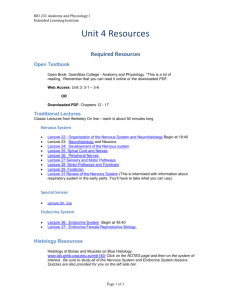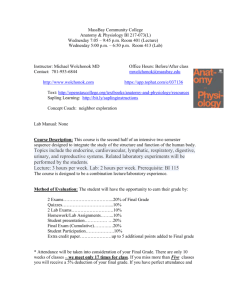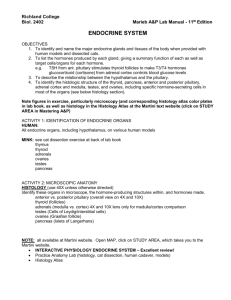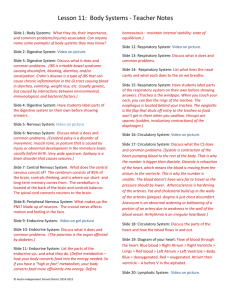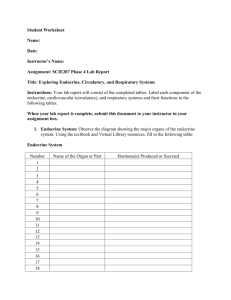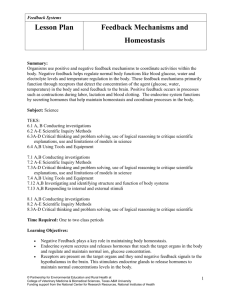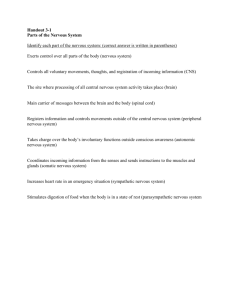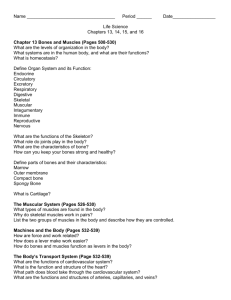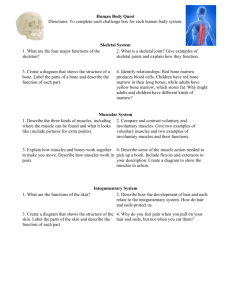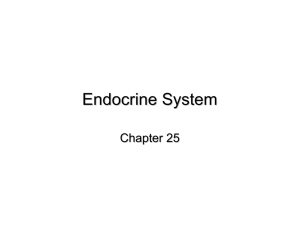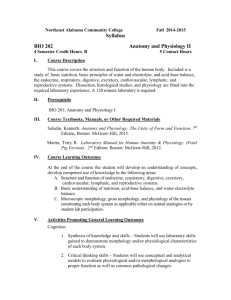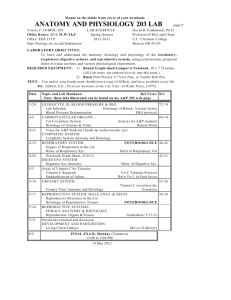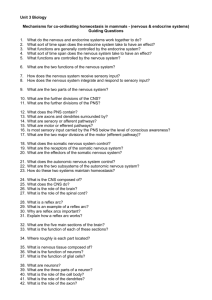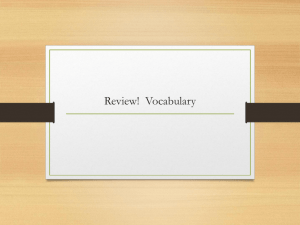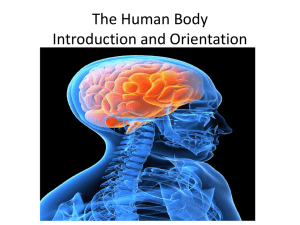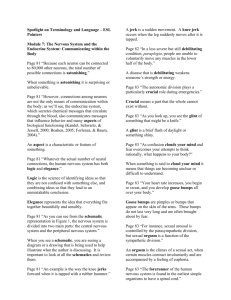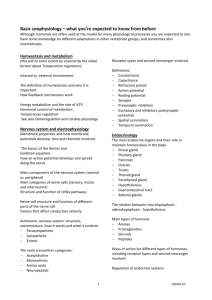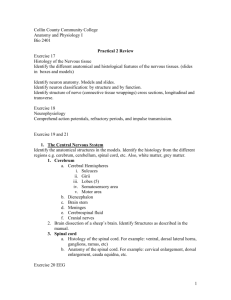Anatomy and Physiology Honors - Chariho Regional School District
advertisement
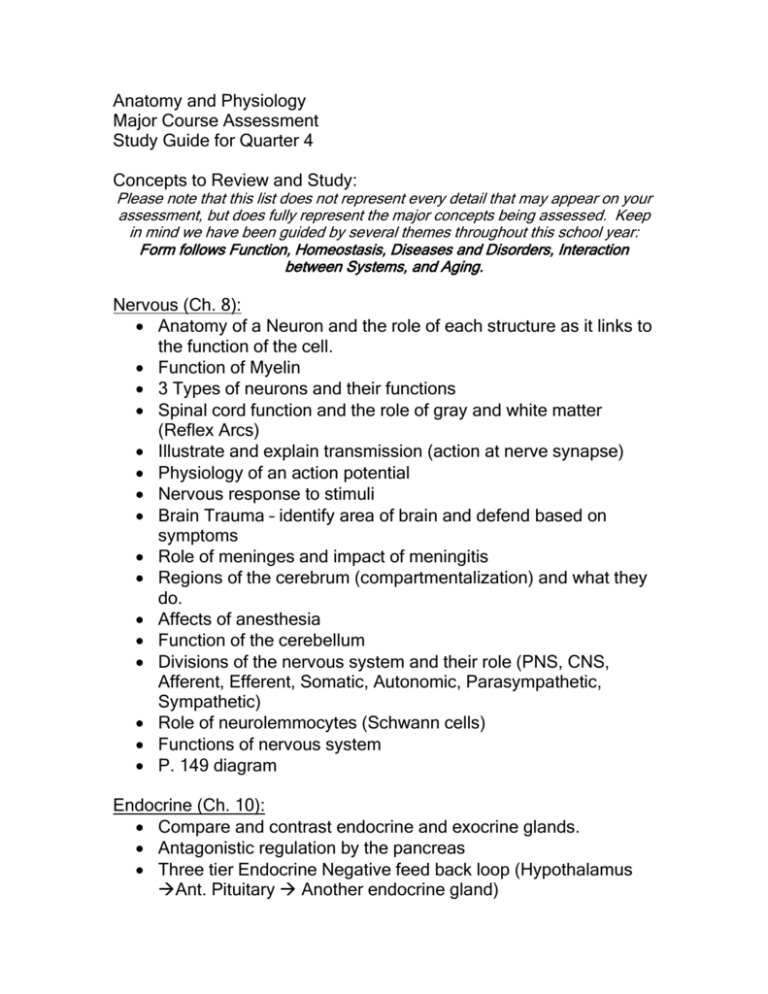
Anatomy and Physiology Major Course Assessment Study Guide for Quarter 4 Concepts to Review and Study: Please note that this list does not represent every detail that may appear on your assessment, but does fully represent the major concepts being assessed. Keep in mind we have been guided by several themes throughout this school year: Form follows Function, Homeostasis, Diseases and Disorders, Interaction between Systems, and Aging. Nervous (Ch. 8): Anatomy of a Neuron and the role of each structure as it links to the function of the cell. Function of Myelin 3 Types of neurons and their functions Spinal cord function and the role of gray and white matter (Reflex Arcs) Illustrate and explain transmission (action at nerve synapse) Physiology of an action potential Nervous response to stimuli Brain Trauma – identify area of brain and defend based on symptoms Role of meninges and impact of meningitis Regions of the cerebrum (compartmentalization) and what they do. Affects of anesthesia Function of the cerebellum Divisions of the nervous system and their role (PNS, CNS, Afferent, Efferent, Somatic, Autonomic, Parasympathetic, Sympathetic) Role of neurolemmocytes (Schwann cells) Functions of nervous system P. 149 diagram Endocrine (Ch. 10): Compare and contrast endocrine and exocrine glands. Antagonistic regulation by the pancreas Three tier Endocrine Negative feed back loop (Hypothalamus Ant. Pituitary Another endocrine gland) Dual role of the Thymus gland Compare and contrast steroid and peptide hormones Growth hormone and impacts of hyper or hypo secretion of GH. Diseases and Disorders of Endocrine (e.g. Addison’s, Cushing’s, Dwarfism, SAD, Diabetes incipitus, Diabetes Mellitus, etc.) Regulation of calcium in the blood Specific role of hormones (e.g. oxytocin, calcitonin, insulin, TSH, ACTH, etc.) Compare and contrast hypothalamic control of anterior or posterior pituitary. Steroid vs. peptide hormones Functions of endocrine system Anterior vs. Posterior Pituitary secretions P. 186 diagram. Blood (Ch. 11): Components of blood- know all constituents (plasma and formed elements) Hemopoiesis, Erythropoesis, and Hemocytoblasts Structure/function of red blood cells vs. white blood cells Blood types Differences between granulocytes and agranulocytes Hemostasis - stages What are reticulocytes? Role of hemoglobin and significance of iron Cardiovascular (Ch. 12): Location of cardiovascular organs (which cavity) All structures of heart- study your diagrams!! Flow of blood through the heart Coronary arteries and cardiac veins- location & function Histology of layers of heart (epicardium, myocardium, endocardium) Cardiac cycle- heart sounds, nodes, systole, and diasystole Changes in fetal & adult circulation (compare pulmonary & systemic circ.) Atherosclerosis, thromoboembolism, stroke, aneurysm, and myocardial infarctions. Study diagram on p. 227 and 228 in book Lymphatic (Ch. 13): Know all structures/functions Types of lymphocytes and functions Symptoms of inflammation, edema Types of immunity How does aging affect lymphatic system How does lymphatic help blood w/ homeostasis Primary and Secondary organs Respiratory (Ch.14): Location/function of all respiratory structures Importance of respiratory membrane Histology of respiratory structures Inspiration, expiration Process of gas exchange in the lungs Sneeze vs. cough reflex Dual role of pharynx and epiglottis Structure and function of air passages Histology of respiratory structures Site of external vs. internal respiration Chronic bronchitis, Restrictive pulmonary obstruction, Asthma, Emphazema Role of diaphragm P. 276 diagram in book. Digestive (Ch.15): Functions of system Tunics (layers) of alimentary canal (histology) Role of parotid gland and link to mumps Cells that produce HCl, pepsinogen, mucous, etc. Roles of sphincters (e.g. pyloric and ileoceceal) Location of chemical digestion for macromolecules Enzymatic function on macromolecules (e.g. amylase) Role of mucous in digestive system. Acid Reflux, Appendicitis, Gallstones, Colitis P. 296 diagram in book Urinary or Excretory System (Ch. 16): Functions of system Gross anatomy Form follows function of Histology of organs p. 324 diagram in book.
